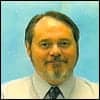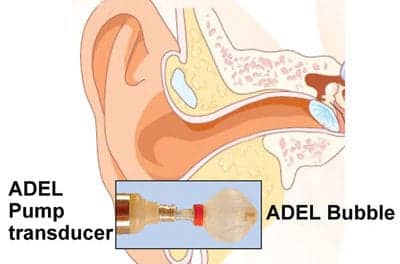Issue: 2007 International
Despite all the perceived differences between Europeans and Americans, for hearing aid component manufacturers, there are no national boundaries. Hearing aid manufacturers must comply with national regulatory standards such as the CE mark and the FDA, but requirements for components are universal.
“We have quality standards and certification requirements, but they are the same for everyone. We offer one programmable part to both US and European customers, and they implement their unique ideas within that part,” says Marc Niklaus, product line manager for audiology solutions at AMI Semiconductor in Waterloo, Ontario.
“In an industry dominated by global players, corporate cultures seem to matter more than national cultures,” says Ton Pothoven, president of subminiature transducers at Sonion Nederland BV. Most corporate cultures in the industry have a focus on development that is often driven by customer needs, technological advances, and, of course, miniaturization.
It’s a Smaller World

|
| Knowles Electronics’ Ray Kirchhoefer |
How small can components get? “Customers would love products the size of a pencil dot,” says Ray Kirchhoefer, vice president of research and development for Knowles Electronics LLC, Itasca, Ill. And who wouldn’t, he asks? Smaller products could allow for less obtrusive hearing devices for users and fit more functionality on slightly larger devices.
Unfortunately, the current knowledge of nanotechnology prevents the creation of compoenents the size of a pencil dot. Not only must the components themselves be small, but the manufacturing process also needs to accommodate the miniaturized size. Niklaus thinks it’s unlikely that components will shrink to one tenth of their current size, but if history holds any lessons, it shouldn’t be completely ruled out. “Smaller components would certainly allow new implantable opportunities,” Niklaus says.

|
| Sonion’s Ken Teese |
“There are times [when] we think we’re coming close to the smallest size possible,” says Ken Teese, product manager of subminiature transducers at Sonion US, Minnetonka, Minn. “However, new innovations and technology are discovered that bring us to the next level, and new manufacturing techniques come into play to handle the smaller size. That’s what keeps it interesting and fun—finding new ways to beat the laws of physics.”
Breaking the Rules of Physics
Knowles aims to break physical barriers in speaker and microphone technology. “You need a certain size or shape to cover a wider range of output from speakers, but there are some form factors that are now changing, and we are creeping forward toward a silicon-based microphone,” Kirchhoefer says.

|
| Knowles offers a wide range of receivers. |
The company is focused on its search for new materials, but continues to communicate with customers to implement changes that also meet their specific needs. According to Kirchhoefer, advances resulting from this collaboration include the smallest available speaker, reduced vibration in the receiver, a small series of extended bandwidth receivers—about 10 kHz—and plastic housings.
New materials, such as the plastic for the housings, contribute to the miniaturization of the components, as well as provide potential performance benefits. The plastic housings eliminate the receiver’s metal housing while keeping the devices self-contained. “With plastic, we can make some mechanical changes to the way we build the product that will offer some slight benefits to the hearing aid manufacturer in performance,” says Kirchhoefer.
However, changes, even in materials, are incremental. “The industry has been using metal housings for 50 years, so there is a need for significant understanding about the potential problems and issues that can result from a change,” says Kirchhoefer. Knowles, therefore, works closely with its customers throughout development, not just during the idea or marketing phases. Areas of current progress include monitor and matched microphones and the ongoing materials search.

|
| The Knowles integrated faceplate module (8200 series) features an integrated push-button, microphone, battery door, and flex programming module block. It securely fasten to a frameless faceplate and can be removed using a single extraction tool. |
The ability to communicate with customers carries over into other areas of production. Customers can purchase parts to which they add their chip sets (Knowles also manufactures faceplates, switches, volume controls, and similar elements) as well as transducer preps, some assemblies, and lead attachments. Customers use these services to fill in unpredictable volume demands. “We want to help our customers any way we can and think of them as on the same team,” says Kirchhoefer.
The Middle Road
Components manufacturers often have numerous customers with different needs but have to produce products that can meet all the customers specifications. AMI Semiconductor’s corporate culture therefore prizes flexibility. The company produces one component for all of its customers: the digital signal processor (DSP). “We have to be very creative with the silicon architectures we develop to be sure they are flexible enough to allow as many customers as possible to fulfill their own needs,” Niklaus says.
The one-size-fits-all approach produces a very flexible instrument. “The DSP is fully programmable so customers can produce unique products,” says Niklaus. Development has focused on increasing computing capability with the same power supply, permitting better correction and adding processing in different types of listening situations. “The more computing capabilities you have at your disposal, the more new ideas will find fertile ground in which to grow,” Niklaus says.
In April, the company released its latest generation of DSP chips, the Ezairo 5900, which employs 130nm silicon technology and 24-bit programmable processing. The improvements permit hearing aid manufacturers to create more sophisticated algorithms that improve performance (eg, bi-directional capabilities) without increasing power requirements. The previous generation, Orela 4500, featured 180nm silicon technology and 16-bit processing.
Improvements have to come with no size increase and, ideally, advances should provide a decrease in size. The next step will be to decrease silicon technology to 90 nm or 65 nm, according to Niklaus. “This would allow more features, such as speech recognition, on a smaller chip.” Niklaus says.

|
| AMI’s Ezairo 5910 hybrid is just 0.235″ x 0.136″ x 0.063″. |
The technology can be challenging to produce, but Niklaus notes that it provides a middle road between standard off-the-shelf DSPs—”often big and power hungry,” he says—and ASICs [application- specific integrated circuits] that have features specified by the customer. To get to 90 nm, AMI will have to keep an eye on cost-effectiveness. “We have to make sure that, if a product will cost a lot of money to develop and manufacture, it can be amortized over many customers,” Niklaus says.
Some hearing aid manufacturers produce their own DSP circuits, often those with a history that pre-dates the launch of components manufacturers. However, they do not have a large impact on AMI’s market, since they typically do not sell their products to their own competitors.
Variety Spices Life
Sonion’s product lines feature microphones, receivers, telecoils, volume controls, trimmers, switches, combination units, programming systems, and wax protection systems. The company is also active in related markets, such as earphones, headsets, mobile handsets, and medical device components.

|
| Sonion’s 3300 |
Though the technology for each part differs, Sonion strives for balance in each. “We want to put more performance into a smaller package,” says Teese. “But as components get smaller and performance gets better, we must not forget the importance of product longevity or robustness. Our components face a tough world,” he says, citing extreme temperature and humidity changes; physical impacts, such as drops; and human elements, such as cerumen.
The company therefore focuses on physics, performance, protection, and production. “Our engineers have done a great job of analyzing all the parameters of performance and maximizing them,” Teese says.
Physically, the company seeks to miniaturize its components even further. The new 6200 series microphone is 40% smaller than its predecessor. Yet, it also features improvements in the diaphragm construction, integrated circuit, and hybrid technology that positively impact performance.

|
| Sonion’s products |
Improved performance doesn’t always mean that some feature has been added; sometimes an annoying characteristic is taken away. In addition to improving acoustic properties, receiver development has also emphasized the removal of unwanted mechanical vibration.
Extending a product’s life cycle is also important. To achieve this, Sonion has advanced its protection technology. Late last year, the company introduced the C-Barrier as an example to protect the transducer against harsh environments and to physically block foreign material from entering the sound tube.
The company takes equal care with production, using complex flows to meet specific performance requirements and size constraints. The process can consist of 40 to 60 operations, including heat treatments, laser welding, and precisions assembly; automation is used according to the country of production.
“Whereas the process flow is a given, the level of automation applied has changed as production has moved to lower labor cost countries. For example, in the Netherlands, we use handling automation to reduce labor; in Poland and Vietnam, we focus on automation for value-adding processes only,” says Pothoven.
Manufacturing is a global process for everyone. Knowles manufactures microphones in Penang, Malaysia, and receivers in Suzhou, China. “We’ve been in Asia for about 20 years,” says Knowles. But the impact on production has been minimal. “There is no difference by country,” says Kirchhoefer. For hearing aid component manufacturers, neither production nor development has borders.





